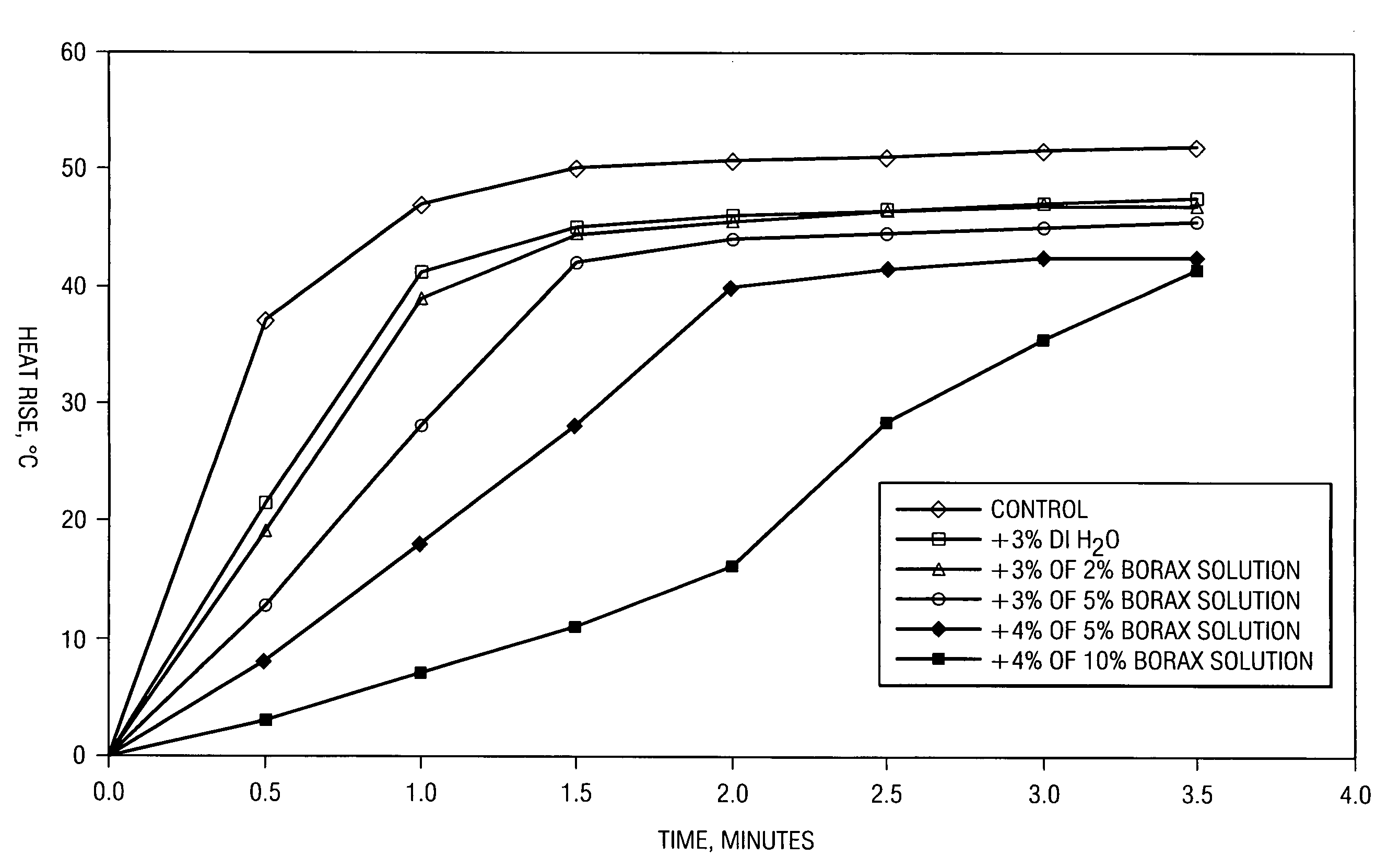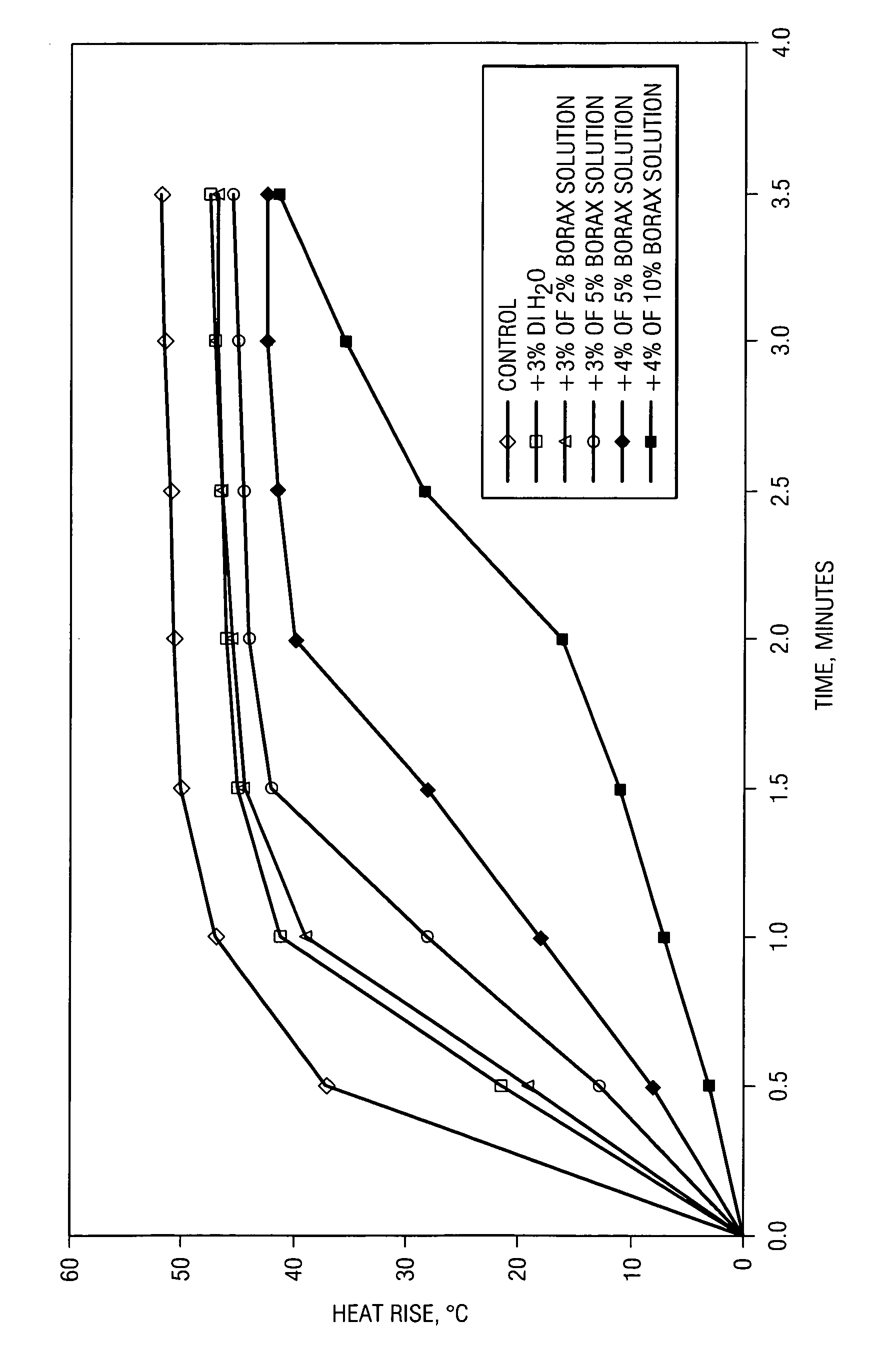Method of retarding quicklime for glass manufacture
a technology of quicklime and glass, which is applied in the field of glass production process, can solve the problems of affecting the accuracy of the movement and weighing of the quicklime portion of the batch, the inability to quickly react with the exothermic reaction, and the batch to stick together, so as to achieve the effect of easy control, higher borax solution, and higher borax percentag
- Summary
- Abstract
- Description
- Claims
- Application Information
AI Technical Summary
Benefits of technology
Problems solved by technology
Method used
Image
Examples
Embodiment Construction
[0025]In the discussion which follows, the term “quicklime” will be take n to mean calcium oxide, CaO, and should not be confused with limestone (calcium carbonate). As briefly outlined in Applicant's background discussion, quicklime is manufactured from limestone by heating to remove carbon dioxide. Quicklime can be converted to Ca(OH)2 by a slaking process where water and CaO are mixed under agitation and temperature to produce Ca(OH)2, known in the industry as slaked lime or lime hydrate. The present invention is directed toward a method to produce a quicklime having a controlled reactivity, for example, in the presence of water, water vapor, or reaction condensate.
[0026]In the traditional production of quicklime, raw limestone is first fed to a calciner which is typically a horizontal or vertical kiln. The kiln is fired by burners which typically utilize pulverized coal as a fuel and are capable of reaching calcining temperatures in excess of 2000° F. The intense heat causes a c...
PUM
| Property | Measurement | Unit |
|---|---|---|
| temperature | aaaaa | aaaaa |
| temperatures | aaaaa | aaaaa |
| reactivity | aaaaa | aaaaa |
Abstract
Description
Claims
Application Information
 Login to View More
Login to View More - R&D
- Intellectual Property
- Life Sciences
- Materials
- Tech Scout
- Unparalleled Data Quality
- Higher Quality Content
- 60% Fewer Hallucinations
Browse by: Latest US Patents, China's latest patents, Technical Efficacy Thesaurus, Application Domain, Technology Topic, Popular Technical Reports.
© 2025 PatSnap. All rights reserved.Legal|Privacy policy|Modern Slavery Act Transparency Statement|Sitemap|About US| Contact US: help@patsnap.com


